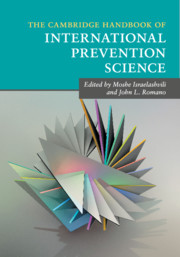Book contents
- The Cambridge Handbook of International Prevention Science
- The Cambridge Handbook of International Prevention Science
- Copyright page
- Dedication
- Contents
- Figures
- Tables
- Contributors
- Foreword
- Acknowledgments
- The Nature of Prevention Science
- Part I The Essence of Prevention Science
- Part II The Globalization of Prevention Science
- Asia & Australia
- North, Central, & South America
- 30 Preventing School Shootings from an American and European Perspective
- 31 Ending Child Sexual Abuse
- 32 The Evolution of Alcohol and Drug Prevention Strategies in Latin America
- 33 Effectiveness of Brief Prevention Programs for Adolescents in Mexico
- Europe
- Africa & the Middle East
- The Future of Prevention Science
- Index
- References
31 - Ending Child Sexual Abuse
A Look at Prevention Efforts in the United States
from North, Central, & South America
Published online by Cambridge University Press: 21 January 2017
- The Cambridge Handbook of International Prevention Science
- The Cambridge Handbook of International Prevention Science
- Copyright page
- Dedication
- Contents
- Figures
- Tables
- Contributors
- Foreword
- Acknowledgments
- The Nature of Prevention Science
- Part I The Essence of Prevention Science
- Part II The Globalization of Prevention Science
- Asia & Australia
- North, Central, & South America
- 30 Preventing School Shootings from an American and European Perspective
- 31 Ending Child Sexual Abuse
- 32 The Evolution of Alcohol and Drug Prevention Strategies in Latin America
- 33 Effectiveness of Brief Prevention Programs for Adolescents in Mexico
- Europe
- Africa & the Middle East
- The Future of Prevention Science
- Index
- References
- Type
- Chapter
- Information
- The Cambridge Handbook of International Prevention Science , pp. 728 - 752Publisher: Cambridge University PressPrint publication year: 2016
References
- 6
- Cited by



